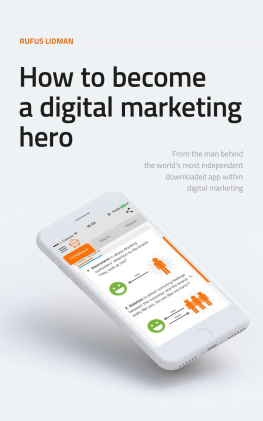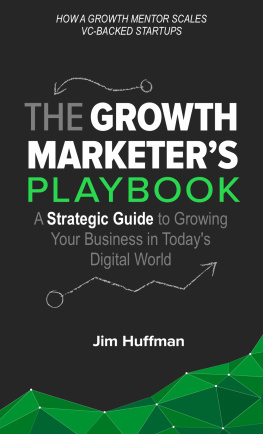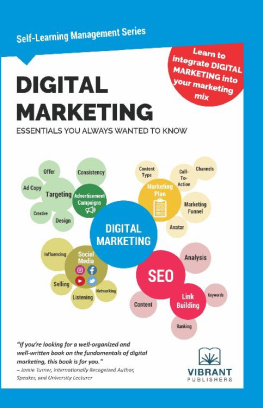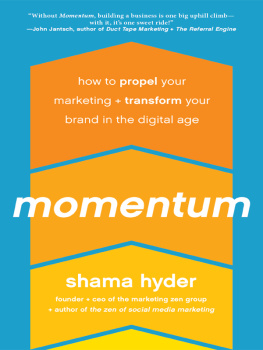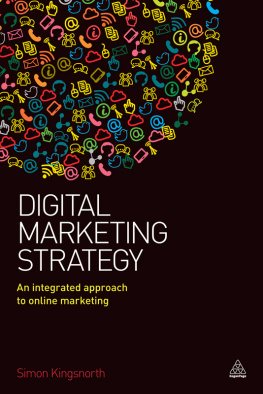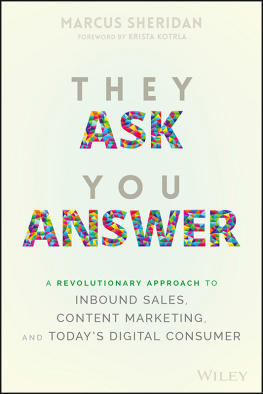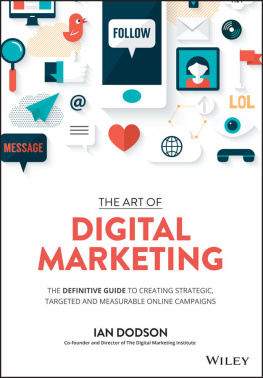Before we get started, I believe it is important to address the problem of definingor at least aligning around a common definition ofwhat digital growth actually means. Its clear, from the initial diagnostic work my team and I do with financial brands, the majority of bank and credit union leadership teams dont truly understand the concept.
When we begin talking to them about digital, they often latch on to terms like online banking and mobile banking. In other words, theyre thinking about the delivery of the banking services and all the service - oriented pieces of the business model.
But thats not what were looking at in this bookand when I say, digital growth, Im referring not to the delivery model but the growth model, built on growth activities like marketing and sales.
This book defines digital growth as a systematic process, centered on the modern consumer journey, that unites marketing, sales, operations, and IT teams around the following goals: (a) increasing website traffic, (b) generating and nurturing leads, and (c) converting those leads into loans and deposits.
Digital growth positions a financial brand beyond the commoditized great rates, amazing service, and laundry lists of look - alike bullet - point product features that every other financial institution promotes.
It is important to note early and often that digital growth takes time. I liken it to running a marathon, and even that is not a perfect metaphor, because theres no finish line when it comes to digital growth. In fact, digital growth has no end because as you move forward and make progress, you will always discover new roadblocks to eliminate in addition to new opportunities to create or capture.
Digital growth is a journeya journey from good to great.
Introduction
Consumers Have ChangedHave You?
Money is stressful.
According to a recent study conducted by Northwestern Mutual, 85 percent of Americans today feel stress about their finances.
And its only getting worse. From soaring housing costs to the student loan crisis, financial anxiety is realand its taking a significant toll on peoples health, relationships, and overall sense of well - being .
What does this mean for you and your financial brand?
The reality is, in this modern economic climate, consumers have changed. They simply dont trust financial institutions like they used to. Financial brands who dont adapt to these new consumer attitudes and dont adjust their marketing and sales strategies to reflect and address consumer financial stress will find themselves at grave risk.
Unfortunately, this is exactly whats happening almost across the board among traditional banks and credit unions. Rather than welcoming the opportunity to fill a new needwith modern messaging and communication strategies that speak to those (particularly millennials and younger) desperately looking for a partner they can trust , who can guide them to a bigger, better, and brighter futuremost financial brands are still doing the same old marketing they always have, in the same way they always have.
Moreover, their marketing and sales strategies dont reflect the way consumer behavior has changed. In todays digital world, consumers are empowered with unlimited access to knowledge and information. They also have more available options than ever before to consider. They do their own research on their own time before making any decisions.
Digital has changed the way people shop, and we also see that in how they buy financial services. Consumers are coming into branches less and less. But financial institutions are still stuck in an outdated, branch - first growth model, where in - person branch visits are seen as primary selling opportunities. The truth of the matter is, even when folks do come into branches nowadays (if they come into a branch at all), most of the time their buying decisions have already been made long beforeat a much earlier stage in the consumer journey.
If youre like many of the banks and credit unions Ive worked with, you know your financial brands future growth is not going to come from branches aloneif from branches at all . Youve watched branch traffic decline year after year.
You may also have struggled when it comes to your marketing efforts, as youve only dabbled in digital. You might have built a mobile - responsive , ADA - compliant website, sent emails, placed digital ads, and posted content on social media. But you feel stuck, and deep down you know why: traditional broadcast marketing strategies and tactics do not work with digital marketing. How could they? You know as well as I do every financial brand is out there promoting the same commoditized great rates, amazing service, and laundry lists of look - alike bullet - point product features.
Whats the solution?
How are you going to finally transform your marketing and sales strategies for a digital - first economy, maximize your growth, and rocket ahead of your competitors?
First, you need to see this revolution for what it is and embrace itnot fear it.
The Fourth Industrial Revolution
There have been three past Industrial Revolutions, and we are now in the midst of a fourtha concept that Klaus Schwab, founder and executive chair of the World Economic Forum and author of The Fourth Industrial Revolution is well known for shaping. First, of course, was the steam revolution of the late 1700s, then the electric revolution of the late 1800s, and finally the computer revolution of the 1960s and 70s. Not as often discussed, however, are the revolutions in marketing that accompanied these developments, from print (newspapers) to mass media (TV and radio) to digital (internet).
With the fourth Industrial Revolution, we have now, in the 2010s, moved beyond the computer age and entered a new era of exponential technologies such as robotics, artificial intelligence (AI), virtual reality (VR), the internet of things (IoT), and more.
What does this mean for the evolution of marketing?
With the rise of automation comes the new potential for one - to - one consumer communication strategies at scale . The old days of one - to - many messaging are dead and gone. That kind of one - way , broadcast marketing is simply no longer relevant. The name of the game now is reaching people where they are, along the course of their own consumer journey, so you can communicate and build connection through empathy with digital relationships that put them first.
Just as we are in the fourth revolution in technology, we are also in the fourth revolution in marketing.
Throughout this book, we will return to these concepts of empathy and the consumer journey. Every one of us is on a journey. Narrative is central to human existence, but as we will learn in the following chapters, there can be only one hero in every story.



